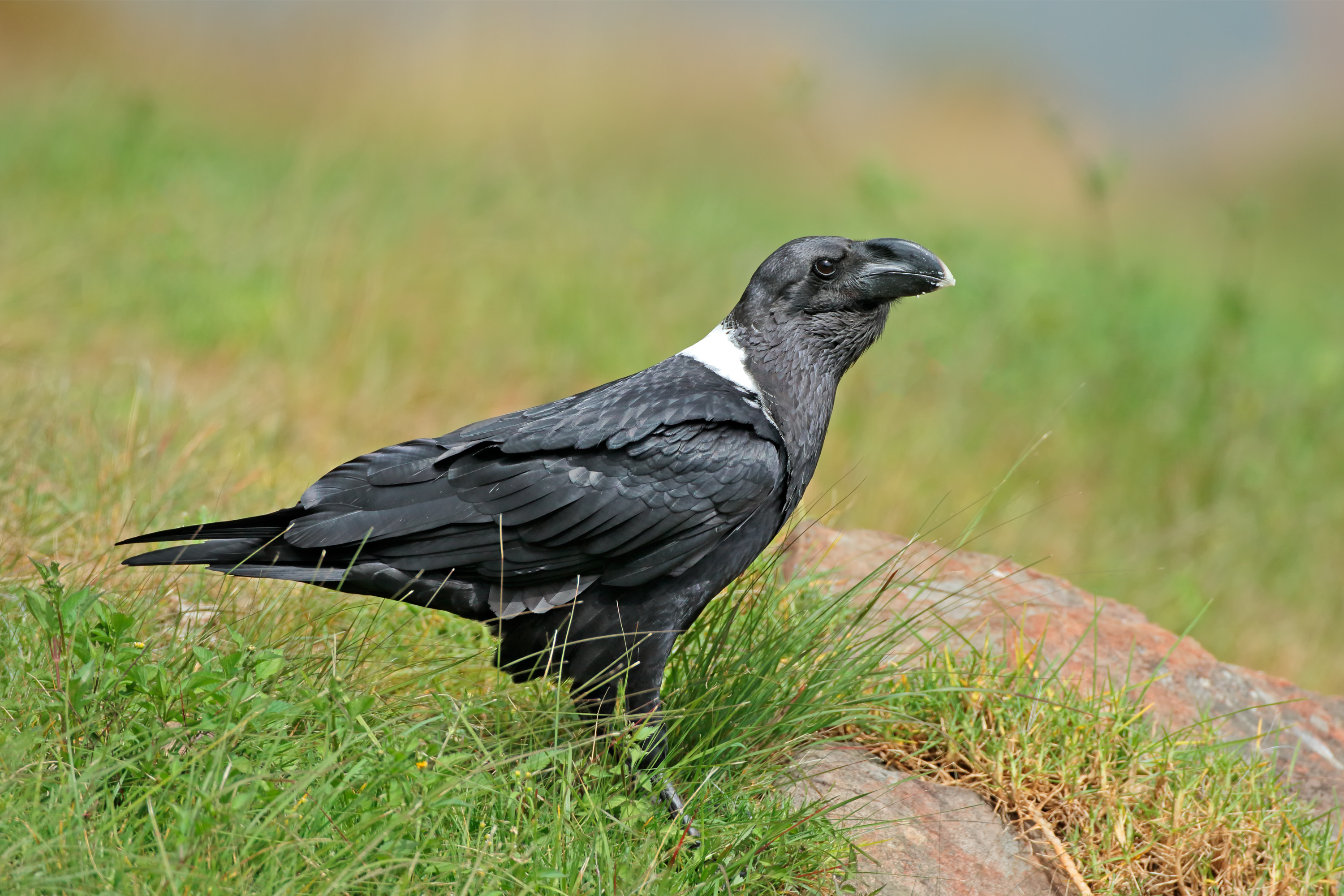White-necked raven
(Corvus albicollis)

Description
The white-necked raven (Corvus albicollis) is somewhat smaller (50–54 cm in length) than the common raven or its nearest relative, the thick-billed raven C. crassirostris. It is native to eastern and southern Africa. The white-necked raven has a much shorter tail than the common raven, as well as a deeper bill with a white tip that is almost as strongly arched as that of the thick-billed raven. Though predominantly black, the throat, breast and neck show a faint purple gloss. There is a large patch of white feathers on the nape of the neck. Soars well with shallower wingbeats than other Corvidae. Length: 50 – 54 cm Wingspan: 752 – 860 mm (17 unsexed birds) Weight: 762 - 865 g Often described as a raven with a sore throat, it has very similar calls to the common raven, but with a more husky note. It has a croak like the other raven species but with a more whispering note. Like all corvids, the White-necked raven is capable of vocal mimicry. However, this behavior is only ever recorded in captivity. It occurs in eastern and southern Africa in open, mountainous country. It is quite commonly found in small towns and villages as long as there are mountains or hills for roosting and nesting relatively nearby. Most of this bird's food is obtained from the ground, but it will take food from trees as well. It has been seen to drop a tortoise from a height on to hard ground, preferably on rocks, and then swoop down to eat it, or even pick it up again if not sufficiently broken. White-necked ravens will also readily take carrion from road kills. Fruit, grain, insects, small reptiles, peanuts and human food are also readily taken, and the bird forages in back yards and gardens quite openly. Like all or most raven species, White-necked ravens form flocks after leaving their parents and, once fully matured, will pair off and form territories. Nests are bowls of sticks lined with grass, hair, and wool, built mainly on cliff ledges but occasionally found in trees. There are usually 3-5 eggs laid. Corvus is a widely distributed genus of medium-sized to large birds in the family Corvidae. It includes species commonly known as crows, ravens and rooks. The species commonly encountered in Europe are the carrion crow, the hooded crow, the common raven, the jackdaw and the rook; those discovered later were named "crow" or "raven" chiefly on the basis of their size, crows generally being smaller.
Taxonomic tree:







